Tradition
About Andrew Cusack
 Writer, web designer, etc.; born in New York; educated in Argentina, Scotland, and South Africa; now based in London.
Writer, web designer, etc.; born in New York; educated in Argentina, Scotland, and South Africa; now based in London. read more
News
Blogs
Reviews & Periodicals
Arts & Design
World
France
Mitteleuropa
Knickerbockers
Argentina
The Levant
Africa
Cape of Good Hope
Netherlands
Scandinavia
Québec
India
Muscovy
Germany
Academica
The 8th Earl of Wicklow
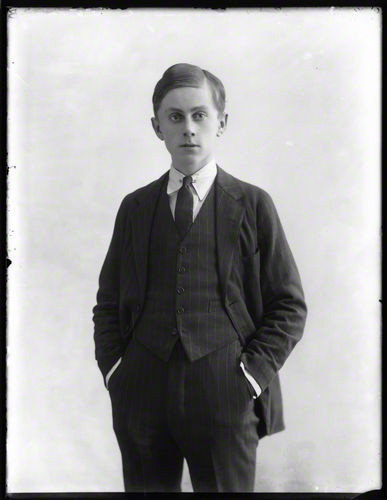
William Cecil James Philip John Paul Howard, 8th Earl of Wicklow (styled Viscount Clonmore from his birth until succeeding to the earldom in 1946) was received into the Church at the age of thirty in 1932. Having attended Mass with the family’s Catholic servants, he was banished from visiting the family home on Sundays in addition to being disinherited. He later married the architect Eleanor Butler who served in Seanad Éireann from 1948-1951. Above is one of three photographs of Viscount Clonmore in the collection of the National Portrait Gallery.
The Major-General’s Statue
Die staanbeeld van Maj-Gen Lukin in die Kompanjiestuin
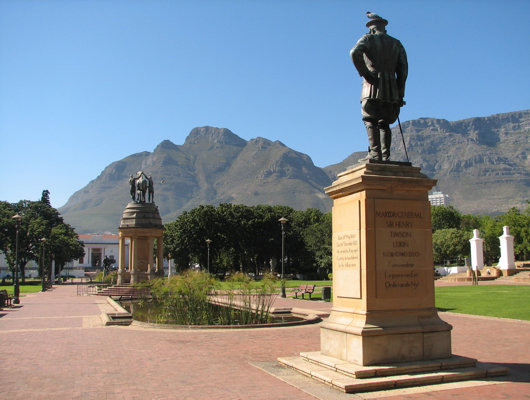
While Afrikaans is a mild obsession of mine, I do like finding those holdouts of what they used to call “High Dutch” — in contrast to the ordinary South African spoken Dutch which, because of its differences in grammar and spelling, was eventually recognised as the language Afrikaans.
One such old Dutch holdout can be found on the statue (Af: staanbeeld; lit.: ‘standing-picture’) of Maj. Gen. Sir Henry Timson Lukin in the Company’s Garden, Cape Town. The pedestal proclaims in a very handsome font the General’s rank, name, and orders. In Dutch: Majoor-Generaal Sir Henry Timson Lukin, KCB CMG DSO, Commandeur Legioen van Eer, Orde van de Nyl.
Most of this works perfectly well as Afrikaans but for two slight differences. First: The lack of ‘i’ in de always indicates Dutch rather than Afrikaans, but because of the relative youth of Afrikaans, de can sometimes be employed as an antiquating device. For example, when translating the name of Captain Haddock’s ship in the Afrikaans translation of the Tintin book, the translators chose De Eenhorn (the Unicorn) rather than Die Eenhorn. Obviously an old-fashioned sailing ship would belong to a Dutch-speaking era rather than an Afrikaans-speaking one.
Second is the military rank. Here translated as majoor-generaal, in both Dutch and Afrikaans this evolved into generaal-majoor. Just one of those things. The South African Defence Forces has a history of experimental military ranks which did not last: Commandant-General (for General), Combat General (for Major General), Colonel-Commandant (for Brigadier), Commandant (for Lieut. Colonel), and Field Cornet (for Lieutenant).
There’s your random bit of Afrikaans arcana for the day.
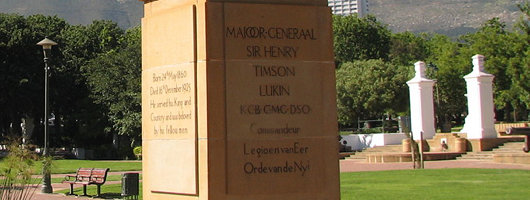
‘I Have Prussiandom in my Blood’
Loriot on Prussia and Prussianness
 November 2003
November 2003The Viennese weekly Falter interviewed Vicco von Bülow — better known as Loriot — in November of 2003. In part of the dialogue, Loriot explored the Prussianness of his family and upbringing, musing upon some aspects of what it is to be Prussian, turning away from the simplistic categorisations. Via Günter Kaindlstorfer.
…
Loriot: I am committed to my Prussian roots. I was born a Prussian, I have Prussian, so to speak, in my blood. That this defines you for yourself is not new. One is born there, so one has to accept it.
Prussian vices have caused too much harm over the past 150 years.
Loriot: That’s right, I will not deny it at all. Nevertheless, I am proud of my native town of Brandenburg; I am also proud of my country of origin. Here I will not deny, however, that I have been occasionally affected by the disaster that this country has done throughout history, time and again. Only: Which country has, over the centuries, not caused many evils? I will not have the Prussian reduced only to its negative sides. (more…)
Valle Adurni on Catholic France
The blogger ‘Pastor in Valle’, who writes over at his blog Valle Adurni, recently composed a splendid overview of Catholic France basically from the baptism of Clovis onwards. Of course, it’s a very general overview, but Pastor has rather skillfully managed to manage to pack a lot into relatively few words.
It’s in five sections: here are the first, second, third, fourth, and fifth.
A Rioplatense Kingdom?
New book explores the monarchic projects of the River Plate, 1808–1825
A book recently published in Buenos Aires sheds new light on the difficult transition period between the Spanish Empire on the River Plate and the foundation of the Argentine Republic. The launch party for Bernado Lozier Almazán’s Proyectos monárquicos en el Río de la Plata 1808-1825. Los reyes que no fueron (“Monarchic projects in the River Plate 1808–1825: The kings who weren’t”) was held recently in the Quinta ‘Los Ombúes’, home of the municipal library, museum, and archives of San Isidro, the city in the Provincia de Buenos Aires known as Argentina’s ‘Rugby Capital’.
Proyectos monárquicos highlights the forgotten truth that most of the Argentine ‘patriots’ — San Martín, Belgrano, and Alvear among them — were monarchist, not republican. Proposals involving the courts of Spain, Portugal, France, and even England were proffered, and there was even an interesting proposal to marry a European prince to an Incan princess and offer him the throne of the Río de la Plata. (more…)
Canada’s Royal Standards
In anticipation of the recent visit of the Duke and Duchess of Cambridge to Canada, the government of that dominion unveiled new Canadian personal flags for the Prince of Wales and the Duke of Cambridge. The British Empire started out as a group of states and colonies united in the British crown, but as the Empire evolved into the Commonwealth, dominions were gradually recognised as sovereign entities of their own. Thus when, for example, Elizabeth II visits, say, Vancouver, it is not the ‘Queen of England’ who is visiting but the Queen of Canada exercising her functions in her own country. (This is a point frequently lost upon ideological republicans). Even when Elizabeth remains in London she puts on different ‘hats’ for different occasions. The only time I ever saw the Queen was at a Service for Australia at Westminster Abbey, thus it was the Queen’s Personal Flag for Australia which flew from the tower of the Abbey, not the British Royal Standard.
The Queen’s Personal Flag for Canada (above, top), often informally known as the Canadian Royal Standard, was devised in 1962 (the same year similar banners were created for Australia and New Zealand). Until 2011, the Queen was the only member of the Canadian Royal Family to have a personal flag for Canada, but now she is joined by her son and grandson, the Prince of Wales and the Duke of Cambridge respectively.
Cape Town’s ‘Nazi’ Street to be Renamed
Oswald Pirow Street will rechristened after Dr. Christiaan Barnard
The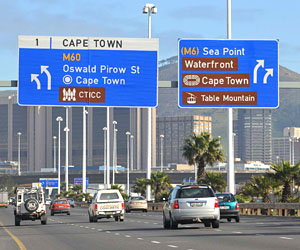 city of Cape Town has recently effected a small number of street name changes decided at the end of last year. The N2 route as it heads into the centre of the city, currently called Eastern Boulevard, will be renamed Nelson Mandela Boulevard. The open square between the opera house and the city offices will be renamed Albert Luthuli Place. Most significantly, Oswald Pirow Street on the Cape Town foreshore will be renamed Christiaan Barnard Street.
city of Cape Town has recently effected a small number of street name changes decided at the end of last year. The N2 route as it heads into the centre of the city, currently called Eastern Boulevard, will be renamed Nelson Mandela Boulevard. The open square between the opera house and the city offices will be renamed Albert Luthuli Place. Most significantly, Oswald Pirow Street on the Cape Town foreshore will be renamed Christiaan Barnard Street.
The renaming of streets and other places in South Africa has proved a controversial and unsettling task. Many streets named after leading figures associated with the 1948-1990 apartheid regime remain. In 2001, the New National Party (NNP) mayor of Cape Town, Peter Marais, attempted to rename Adderley Street and Wale Street after Nelson Mandela and F.W. de Klerk respectively. But Marais’s plan provoked a surprising public backlash, as well as opposition-for-opposition’s sake from the local ANC. The proposed ‘Nelson Mandela Avenue’ had already been renamed once: originally Heerengracht, the grateful citizens of Cape Town rechristened it Adderley Street in 1850, as a token of thanks to Charles Bowyer Adderley MP (later 1st Baron Norton) for his successful campaign against turning the Cape into a penal colony. (more…)
Senator Eugene McCarthy: A Kirkian Anecdote
Russell Kirk, the great St Andrean and American man of letters, relates this anecdote in his article “Will American Caesars Arise?” (Modern Age, Summer 1989):
The most interestingly complex of all recent aspirants to the presidency, [Senator Eugene] McCarthy obdurately called himself a liberal during years when that appellation was sinking swiftly in popular favour – although he abjured all forms of liberalism earlier than Franklin Roosevelt’s. (During the past few years, as he now remarks, he has employed the word ‘‘liberal’’ as an adjective merely.) In his political theories, actually, McCarthy has been a conservative: He declared long ago that Edmund Burke was his political mentor, and no one has more warmly praised Tocqueville. He has read seriously and written intelligently. In the White House – per impossibile – he might have turned the most imaginatively conservative of Presidents.
Or perhaps not. Once upon a time I had an assistant who was a graphoanalyst, an expert on handwriting. Having examined a specimen of Senator McCarthy’s handwriting, my assistant pronounced him rebellious, a hard master, and desirous of power. A touch of Caesar even in Caesar’s adversary? However that may be, McCarthy’s only considerable assertion of power was his unseating of President Johnson by running a good second in the New Hampshire primary of 1968.
A congenital no-sayer, Eugene McCarthy never ran with the hounds. He was candid and witty always. He and I first met as debaters before a large audience, in Boston. After this exchange, sponsored by the Paulist Fathers, a reception was held for us. Up to Senator McCarthy came a zealous young Paulist, inquiring, “Senator McCarthy, don’t you think that Jack Kennedy is the finest president this nation ever has had?” (This occurred during the first year of the Kennedy administration.)
“No,” said McCarthy, unsmiling.
Although taken aback, the Paulist returned to the charge: “But surely you agree, Senator, that President Kennedy has given this nation a new hope, a new vigor, a sense of moving forward toward great things?”
“No,” said Eugene McCarthy.
The Paulist persisted: “But of course you’ll agree with me when I say, Senator, that the Kennedy family have brought to our life a culture, a refinement, a meaningfulness, that we have not known before.”
“No,” said Eugene McCarthy.
“But – but Senator McCarthy, surely Jack Kennedy is a very nice man personally?”
Eugene McCarthy turned his back upon the Paulist and slowly walked away. He knew how to say no, he was not ensnared by cliché and slogan, and he had a poet’s attachment to truth.
Fra Freddy, Rest In Peace
Yesterday, I was very saddened to hear of Fra Freddy’s death. Fra Freddy was a legendary character whom I was introduced to in my first year at St Andrews. He was invited to speak to the Catholic students most years on some subject or another — an introduction to prayer or a lenten meditation. I was quite pleased when he was so taken with a poster I designed to advertise one of his talks that on his way back to Edinburgh he nipped out of the car at the last minute and grabbed a large copy. Fra Freddy was an old-fashioned stick-in-the-mud with a good sense of humour, but he also had the capability to surprise with a kind word when you least expected it.
Fra Fredrik John Patrick Crichton-Stuart was born September 6, 1940 to Lord Rhidian Crichton-Stuart (son of the 4th Marquess of Bute) and his wife Selina van Wijk (daughter of the Ambassador of the Queen of the Netherlands to the French Republic). He was raised in Scotland and North Africa (where his father was British Delegate to the International Legislative Assembly of Tangier) and was educated first at Carlekemp in North Berwick and then at Ampleforth. He joined the Order of Malta in 1962, later being named the Delegate for Scotland & the Northern Marches. In 1993 he was appointed Chancellor of the resurrected Grand Priory of England. Fra Freddy became Grand Prior himself when his cousin, Fra Andrew Bertie, died in 2008 and was succeeded by the then-Grand Prior of England, Fra Matthew Festing.
Fra Freddy was a devoted follower and promoter of the traditional form of the Roman rite. He joined Una Voce Scotland in 1996 and became secretary in 2000. Two years later he was named councillor and senior vice-president of FIUV, the International Federation ‘Una Voce’, and briefly served as its president in 2005.
Over the past year or so Fra Freddy had been varying ill but seemed to recover. I am told he was found dead yesterday morning, still clasping his breviary. He was well-known in Edinburgh and beyond, and he will be missed by his many friends as well as those who worked and volunteered with him or interacted with him in his charitable activities.

FREDERICK JOHN PATRICK CRICHTON-STUART
Grand Prior of England
of the
Sovereign Military & Hospitaller Order of St John
of Jerusalem of Rhodes and of Malta
6 September 1940 – 14 June 2011
Eternal rest grant unto him, O Lord,
and let perpetual light shine upon him.
May he rest in peace.
Amen.
Nobility and Dignity at the Café Valois
Farewell, O good old days! Farewell, O affable visage of the proprietor and smiling and respectful reception of the waiters! Farewell, O solemn entries of the Café Valois’ dignified customs, which people were curious to see. Such was the case with the Knight Commander Odoard de La Fere’s arrival.
At exactly noon, the canon of the Palais-Royal heralded his arrival. He would appear on the threshold and pause for a moment to sweep the salon with an affable and self-assured gaze as someone eager to practice a longtime custom. His right hand pressing firmly on the white and blue porcelain handle of his cane, he threw his old faded brown cape over his shoulder with a swing of his left hand. No one ever snickered at this, since not even the most elegant mantle with golden fleur-de-lys embroidery was ever thrown back with a more distinguished movement.
In 1789 the former steward of the Prince of Conti ran the Café Valois; it was rather devoid of political colour and local flavor at that time.
Among the frequenters of the place, standing out by his noble manners, stately demeanor and wooden leg, was the Chevalier de Lautrec. He was from the second line of that family, an old brigadier of the king’s army, a Knight of Malta, of Saint Louis, of Saint Maurice and of Saint Lazare.
The Chevalier de Lautrec was a middle-aged man who lived a modest, though very dignified life on his small pension. Though he rarely appeared in society, he could be seen most often at the Palais Royal and the Café Valois. He was a very cultured mind and an assiduous reader of all the newspapers.
Deprived of his pension overnight, it was never known what the Chevalier de Lautrec lived on at a time when it was so difficult to live, and so easy to die. But here we have something that sheds at least a dim light on this mystery.
One morning after finishing a very modest breakfast in the Café Valois, as was his custom, the Chevalier de Lautrec rose from his table, chatted with all naturalness with the proprietress, who stood behind a counter, bid good-day to the master of the café with a slight gesture of the eyes, and walked out majestically saying nothing about the bill. (more…)
Arms of the Irish Universities
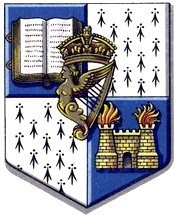 University of Dublin
University of DublinUniversitas Dublinensis; Ollscoil Átha Cliath
Dublin University was founded with the idea of creating a collegiate university along the Oxford and Cambridge model. The University of Dublin, however, failed to develop along those lines, and so its sole foundation was the College of the Holy and Undivided Trinity of Queen Elizabeth near Dublin, more commonly known as Trinity College. Strictly speaking, TCD and the university are distinct entities in law, Trinity being the only college of the university.
The university’s arms, granted in the nineteenth century, are blazoned Quarterly azure and ermine. First quarter a book open proper, bound gules, clasped or, and in fourth quarter a castle of two towers argent, flamant proper. Overall in the centre point the harp of Ireland ensigned with the royal crown. The castle with fired towers is a reference to the arms of the city of Dublin. While it is the university, not Trinity College, that awards degrees, the university arms were not used on degree certificates until 1963, when President John F. Kennedy was granted an honorary doctorate of law in St. Patrick’s Hall at Dublin Castle. (more…)
The Namibian Way of Reconciliation
Accepting differences, not erasing them, is the path to civic harmony
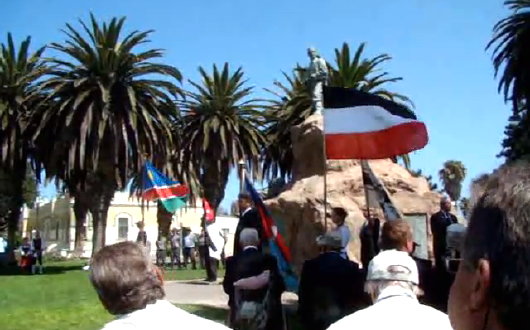
DISCORDIA GERANT ALII, tu felix Namibia reconciliant! Peace and reconciliation are amongst the noblest of earthly aims, but the deluded establishment that rules most of what used to be called the Western world often seem convinced that peace among peoples can only be achieved by erasing the differences between them. Yet it is precisely those differences — the unique characteristics of tribe, clan, and platoon that separate us from some and unite us with others — that make us who we are: human beings, created by God in time and place and circumstance. Without them, we are rootless citizens of nowhere, easily abused and manipulated by the powerful. (How flimsy is even the thickest oak when its roots have been severed). It is the acknowledgement of differences, rather than the erasing of them, that leads to true respect and understanding between and among peoples. While the racial grievance industry thrives in America and Europe, an entirely different attitude exists in happy Namibia. (more…)
Interview with the Last July 20 Plotter
Der Speigel speaks with 88-year-old Ewald von Kleist
Ewald von Kleist is the last surviving member of the circle of Wehrmacht officers who participated in the July 20, 1944 plot to kill Hitler and overthrow the Nazi state. Der Spiegel has translated its interview with him into English, and all four pages feature interesting insights from this brave old man.
And if you read German (I don’t), you might be interested in this article on China & Carl Schmitt.
John Rao on PBS
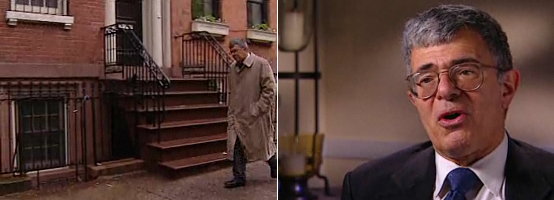
The other day I stumbled upon this blog post from the Chairman of the LMS which included a segment from Religion & Ethics Newsweekly, the hebdomodal programme shown on PBS in the States. The R&E spoke with Dr. John Rao, associate professor of history at St. John’s University in New York and director of the Roman Forum, about the annual Paris-Chartres pilgrimage which unites tradition-minded Catholics from across the globe every Pentecost. You can watch the segment or read the transcript here on the PBS website. It’s also available on gloria.tv here.
I’ve already commended any New York readers of andrewcusack.com to attend the series of historical lectures in Greenwich Village organised by the Roman Forum. It’s time already to consider the annual summer symposium in Gardone on Lake Garda in Italy. This isn’t a boring academic conference where stuffy professors will present papers, this is a symposium in the truest sense. The root of the Greek word means literally “to drink together”, and that more closely reflects the Gardone spirit: a jovial meeting of minds where matters high and low can be discussed in a convivial attitude surrounded by the beauty of the Italian lakes.
Everyone I know who’s attended the Gardone symposium has come back with rave reviews, and many add it to their annual calendar. I’m really, really hoping to make it there this year for the first time, and I hope others will give it a go as well. From June 30th through July 11th, 2011. Click here for more info.
A Pell Sighting
…and sundry other occurences
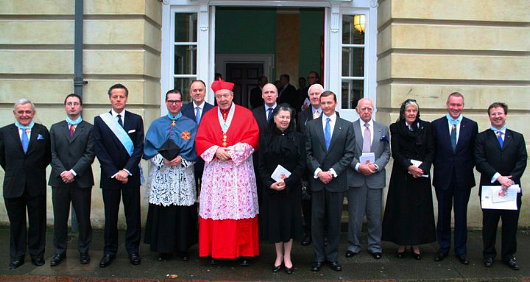
Outside of Rome, you don’t run into cardinals all that often, but last Saturday I caught sight of one of the most popular clerics in the Catholic Church: Australia’s Cardinal Pell. The occasion was the Cardinal’s reception into the Sacred Military Constantinian Order of St George, which took place in the Little Oratory. His Royal Highness the Duke of Noto presided over the investiture, and if you squint your eyes enough you can make out a profile shot of Young Cusack in the background of the photo of the Duke (below). In addition to the Cardinal Archbishop of Sydney’s being made a Bailiff Grand Cross of Justice, six others were invested as members of the Constantinian Order, including His Excellency Don Antonio da Silva Coelho, the Ambassador of the Order of Malta to the Republic of Peru. For more info, see the Order’s notice on the event. (more…)
Mamarazza
The photographs of “Manni” Sayn-Wittgenstein-Sayn
IT’S A CRACKING photo; the sort of thing guaranteed to irk the puritanical and bring a smile to the good-humoured. The thirteen-year-old Yvonne Sayn-Wittgenstein-Sayn takes a swig from a bottle while her brother Alexander, just twelve, sits with a half-smoked cigarette. Taken aboard the yacht of Bartholomé March off Majorca in 1955, the photographer was Marianne “Manni” Sayn-Wittgenstein-Sayn — the mother of Yvonne and Alexander — who’s known by her photographic soubriquet of “Mamarazza”. (more…)
The Drakensberg in Buenos Aires
An Argentine-South African Naval Encounter
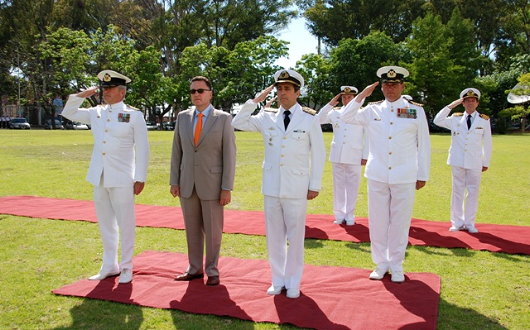
The South African Ship Drakensberg sailed into Buenos Aires last month as part of the sea phase of ATLASUR VIII, a naval exercise involving ships from Argentina, Uruguay, Brazil, and South Africa. Mr Tony Leon, former Leader of the Opposition and currently South African Ambassador to Argentina, was picked up by the ship-borne Oryx helicopter and landed on Drakensberg to observe the sail into Buenos Aires’s harbour. Mr Leon served in the SAN aboard President Pretorius in 1976. (more…)
South Africa in the New Year’s Honours
One CMG and three MBEs show links between Britain and South Africa
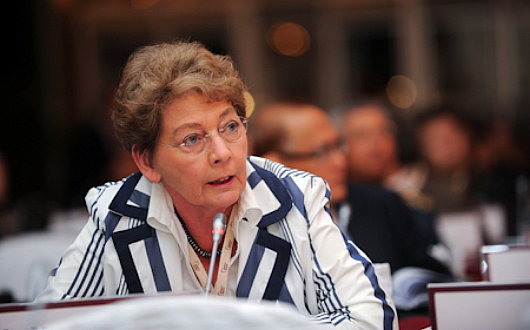
Despite breaking its constitutional links with the Crown over fifty years ago (c.f. here), South Africa continues to enjoy close social, economic, and cultural ties with Great Britain, a fact borne out in the recent New Year’s Honours list. Of the numerous individuals awarded for their public service, four from this year’s list show the relationship between these two countries. Most prominent is Fleur Olive Lourens de Villiers (above), who has been named a Companion of the Most Distinguished Order of St. Michael and St. George. Ms. de Villiers, a graduate of Pretoria & Harvard, is Chairman of the Board of Trustees of the London-based International Institute for Strategic Studies. From 1960 onwards, she has been a theatre critic, economics correspondent, leader writer, columnist, political correspondent, newspaper editor, and travelling correspondent around the world, in addition to working with the De Beers Group and Anglo-American. She was one of the four contributors to the Institute of Economic Affairs’ 1986 study Apartheid: Capitalism or Socialism? which examined the role of the state and its race policy in the South African economy. (more…)
The Start of Something Big in Argentina
The first-ever Nuestra Señora de Cristiandad Pilgrimage to Luján
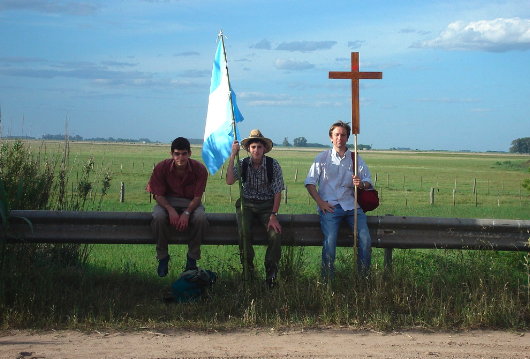
SMALL SEEDS, IF well-planted and tended to, flower into much larger growths. On a Friday morning last month, just four pilgrims set out from the town of Rawson in the Buenos Aires province of Argentina, but by the time they reached their destination — a Latin Mass in the Marian basilica of Luján — their numbers swelled to nearly a hundred. The pilgrimage of November 5th, 6th, and 7th, under the patronage of ‘Our Lady of Christendom’ (Nuestra Señora de Cristiandad) was inspired by the traditional Paris-Chartres pilgrimage every Pentecost weekend. The organisers hope that, like the Chartres pilgrimage, this trek to Luján will become an annual recurring event.
“Renewing Christendom in Argentina” was the theme of this year’s pilgrimage, which “seeks to promote the rich tradition of the Roman Catholic Church for our times” the organisers announced in a press release after its completion.
“This new 100-kilometre pilgrimage was an act of reparation and praise to God, imploring the salvation of souls through the renewal of Christian culture and the rediscovering of the bi-millennial tradition of the Church.” (more…)
The Most British Place in the World?
The Islands of the Anglo-Caribbean: Where Old Britain Lives
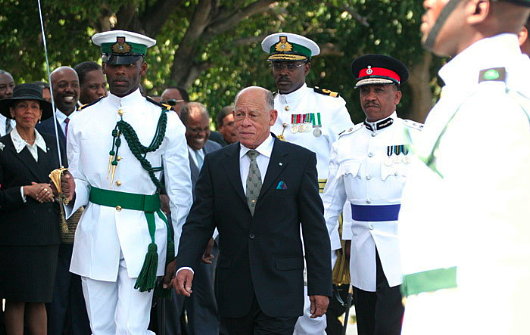
Spoke to a friend recently, who just had a friend of her’s report back after a six-month stint in the Bahamas. “This is the Britain my grandparents always told me about. It must be the most British place on earth. Men in ties and blazers and women in lovely hats. Just the right mixture of formal and laid-back.” (more…)
Search
Instagram: @andcusack
Click here for my Instagram photos.Most Recent Posts
- How to Make a Pope April 24, 2025
- Faithful Shepherd of the Falklands April 8, 2025
- Articles of Note: 8 April 2025 April 8, 2025
- Proportionality Destroys Representation April 8, 2025
- Sag Harbor Cinema March 26, 2025
Most Recent Comments
Book Wishlist
Monthly Archives
Categories



